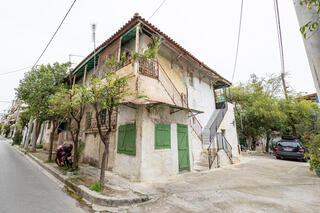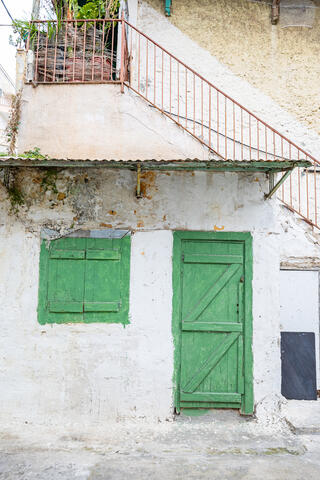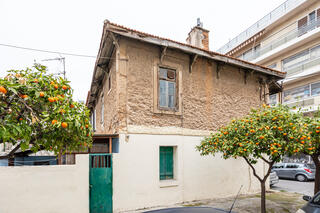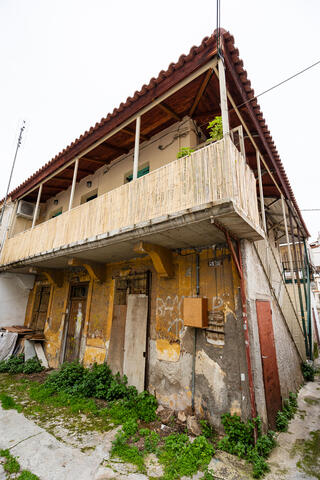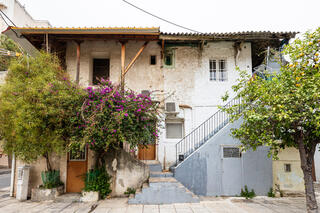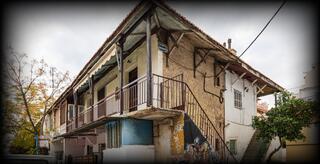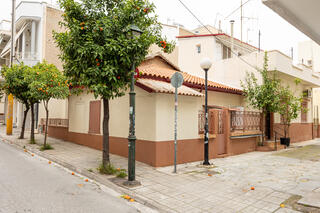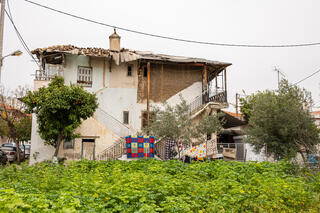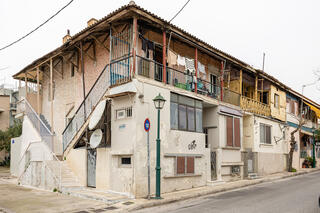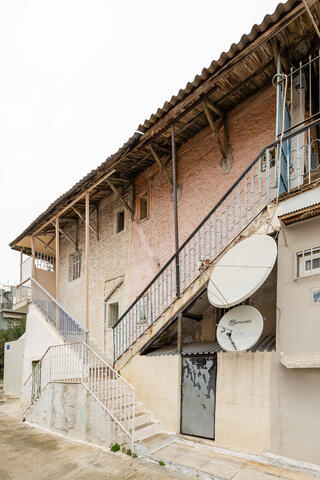REFUGEE HOMES
REFUGEE HOMES
The urban plan of the city includes several different typologies of refugee houses, which were built by the Refugee Relief Fund (1922-1925) and by the Refugee Rehabilitation Committee (EAP, 1924-1930). The houses were built mainly in the districts of Aghios Nikolaos, Osia Xeni and Aghios Georgios. Initially, the Relief Fund built single-storey houses in four-storey blocks on Agios Dionysiou (American Ladies), Kato Giannitson, Verroia, Belgrade, Vryoulon, Ankyra, Agia Triad and Antiochia Streets, up to the boundaries of Kallipoleos Street and vertically from Kappadokia (Amyradaki), Cilicia, Kordelios (Cyprus) Streets. The house had one room and a kitchen, and its area was 32.87 sq.m. Although the original design provided for a common room and privy, they were not implemented. The dwellings were built with bricks and had a four-pitch pitch roof.
The Provident Fund, before it was replaced by the NAP in January 1924, built houses over St. Dionysius Street (American Ladies). The Fund and NAP houses were ground floor or two-story houses of 30 to 35 sq. ft. The one-story houses were arranged in rows, usually 4 or 6 together. The houses had a main room, kitchen and privy. All had access to a street and an inner courtyard. Some houses had an elongated layout with a slight projection of the two end houses. In some cases, the outlying dwellings were divided in the middle into two housing units (without a privy), creating total complexes of 6 or 8 dwellings. The dwellings were brick-built with a pitch-paper gable roof. Another typology was a five-house complex with three ground-floor single-family houses and a two-storey semi-detached house in the corner of the block. The ground floor was constructed with stone and the first floor with bricks and the roof was made of tar paper and tiles.
Another quite widespread typology of the EAP was the two-storey two-family houses in a row of 2 or 4 houses with tiled roofs and stone or brick masonry. The last typology of the NAP was the two-story apartment building with wooden corridors and exterior cross stairs. A complex with 16, 12 or 8 dwellings. The interior ground floor dwellings of the block had their own courtyard.
The building was constructed of reinforced concrete, stone walls and tile roof. The refugee houses were built by the NAP and purchased by the refugees, who in order to obtain full title to the property had to have paid off their debts to the NAP and, after its dissolution, to the Agricultural Bank.
VIRTUAL TOUR
3D
Monument Reconstruction

